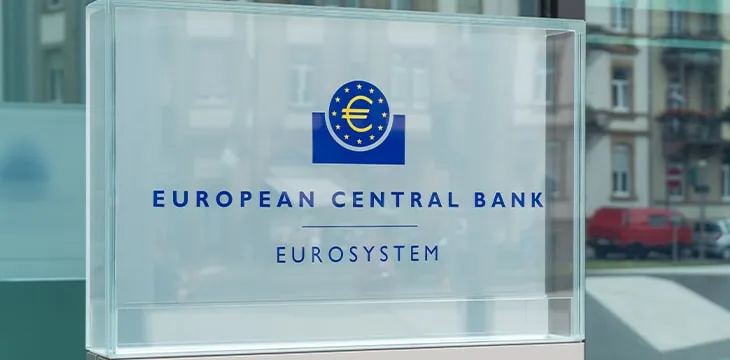|
Getting your Trinity Audio player ready...
|
CoinGeek has recently reported several stories that strongly suggest a digital euro is coming. This week, the European Central Bank (ECB) confirmed it. The digital euro project is officially underway.
The ECB is one of the most powerful central banks globally, setting monetary policy for the Euro area. Its president, Christine Lagarde, recently confirmed she was aware of 80 central banks “looking at” CBDCs. With this latest announcement, we now have official confirmation that one of the biggest of them all is doing a lot more than just looking at them.
Let’s dig into the official announcement from the Governing Council of the ECB and see what nuggets we can glean from it.
What do we know about the digital euro project?
The ECB made the official statement about the central bank digital currency, or digital euro, on July 14, 2021. It made three points immediately clear:
- No technical obstacles had been identified during its preliminary investigation.
- The digital euro would be designed to fit user preferences and with technical advice from both merchants and intermediaries.
- This is the official “investigation phase,” which will last for approximately 24 months.
This is only the second phase of the project. It will involve scoping out how a digital euro would work in reality and how it should be designed. The ECB emphasized that it has not yet made a decision on the possible issuance of the digital euro and would only do so later.
Who will design and control the digital euro CBDC?
One of the main concerns regarding CBDCs has been who will control them and their design. The ECB has committed to involving citizens, merchants, and the payments industry. It has also promised to engage the European Parliament. In theory, the digital euro will be a collaborative, democratic affair.
What are the goals of the digital euro?
To its credit, the ECB was completely clear about its goals in the announcement. It specifically mentioned:
- Avoiding any undesirable impact on financial stability or monetary policy.
- Providing riskless, accessible, and efficient central bank money.
- It also specifically mentioned the prevention of illicit activity.
While the first two points are just central bank talking points, the last point is interesting. The Euro area already has some of the strictest anti-money laundering and KYC regulations in the world.
It’s obvious that this CBDC will have KYC-checked digital wallets and built-in controls to allow for the monitoring of and prevention of crime. We can also guess what it will mean for other digital currencies that don’t comply with the law.
It looks like the BSV enterprise blockchain approach of designing a blockchain to comply with existing laws and regulations might have been a winning strategy after all.
A strong emphasis on environmental sustainability
Another current news trend is related to the sustainability and environmental impacts of mining cryptocurrencies. Tesla boss Elon Musk even suspended BTC as a payment method due to concerns over its carbon footprint. This question was always going to raise its head at some point. Again, we see it mentioned in the ECB’s announcement. Energy use was directly mentioned.
Tying in with this, the second phase will also benefit from investigations already done by both the ECB and Euro area national central banks. These investigations concluded that both the Eurosystem TARGET Instant Payment Settlement (TIPS) and “alternatives such as blockchain” had proven capable of processing more than 40,000 transactions per second. It emphasized that the power used to run these systems was negligible compared with “crypto-assets such as Bitcoin.”
Two points of interest arise from this statement. First, which blockchains were the ECB experimenting with that are capable of 40,000 transactions per second? And second, what does this mean for BTC in the euro area, since it appears one of the largest and most powerful central banks in the world is taking direct aim at it for its energy usage? Combined with its emphasis on the prevention of illicit activities, it’s unlikely the ECB will view BTC in a favourable light.
We don’t know anything for sure yet, but these questions are interesting to ponder. What we do know is that the BSV enterprise blockchain is already capable of 50,000 transactions per second for a fraction of the energy the BTC system uses. Bitcoin is green technology, but that’s not widely understood yet.
The starting whistle on the digital euro and CBDCs globally
This is only the beginning of the digital euro project. The next 24 months will doubtlessly see reports, rumours, and results. It’s possible that the ECB will be the next major central bank to launch a fully functional CBDC.
Whatever developments occur in the digital euro and other CBDC projects, CoinGeek will keep you updated. These are exciting times, and we’re here to keep you informed.
To learn more about central bank digital currencies and some of the design decisions that need to be considered when creating and launching it, read nChain’s CBDC playbook.
Watch: CoinGeek Zurich panel, Digital Technology and the Future of Banking & Financial Services

 06-22-2025
06-22-2025 





